Phone:
(701)814-6992
Physical address:
6296 Donnelly Plaza
Ratkeville, Bahamas.
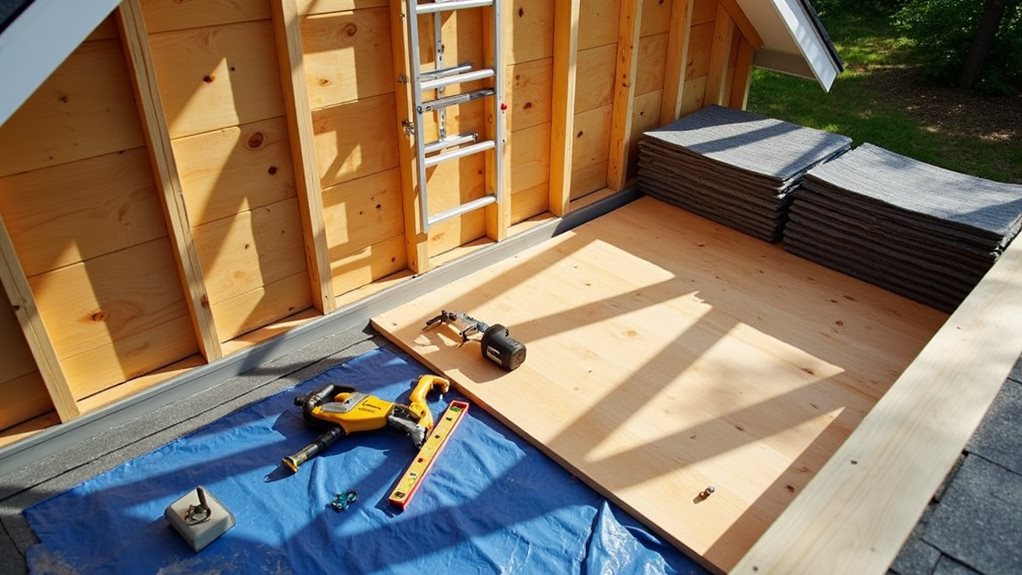
Avoid costly roof extension mistakes with these 10 expert-approved tips that transform your home renovation from stressful to successful.
When planning your roof extension, you'll need to prioritize structural assessment, proper permitting, and weather-appropriate material selection. Start by consulting a structural engineer to evaluate your home's load-bearing capacity, then secure necessary building permits while creating a realistic budget with a 15-20% contingency buffer. Choose materials that match your climate, implement proper ventilation, and guarantee seamless integration with your existing architecture. These essential steps will lay the groundwork for a successful transformation.
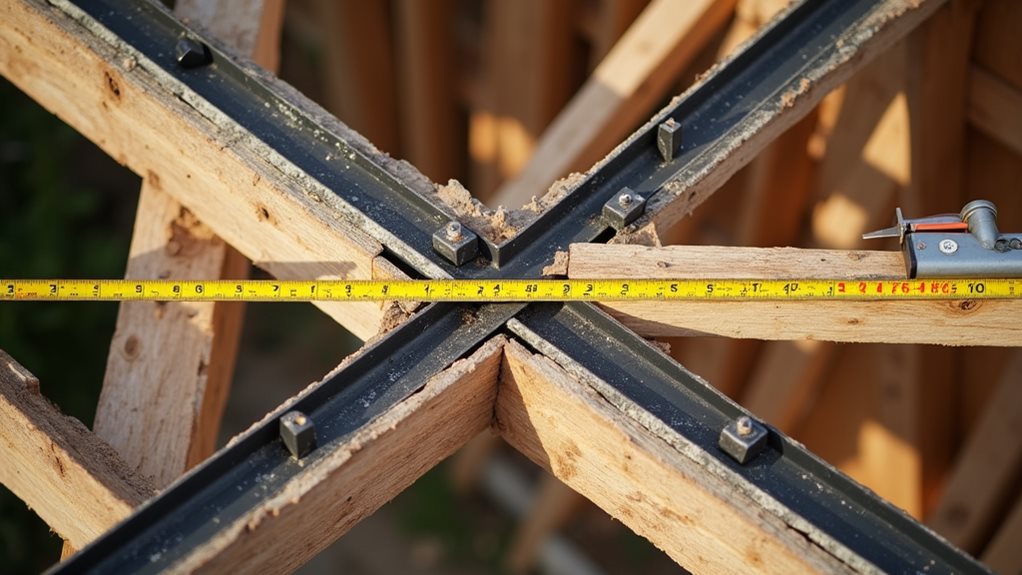
Before you can even think about extending your roof, it's important to understand whether your home can handle the additional weight and stress of a new structure.
You'll need a thorough structural assessment to evaluate your home's existing load-bearing capacity and determine if modifications are necessary.
Working with a qualified structural engineer, you'll need to analyze key elements like your foundation, walls, and current roof structure.
They'll perform detailed load calculations that account for various factors, including dead weight, live loads, and environmental stresses like wind and snow. Additionally, the expertise of Manchester's expert builders can provide valuable insights during this assessment.
You're not just protecting your investment; you're ensuring your family's safety.
A primitive planning phase is essential to assess your home's structural integrity and set realistic expectations for the project.
Remember that different materials interact uniquely – from concrete to timber – and proper anchoring is significant.
Don't skip this crucial step; it's the foundation of a successful roof extension project.
With your structural assessment complete, selecting the perfect design for your roof extension becomes the next exciting phase of your project.
You'll want to balance design aesthetics with roof functionality while ensuring your choice complements your home's existing architecture. Today's homeowners have numerous options that can transform their living spaces while adding value to their properties. Metal roofing options can provide exceptional durability with a 40 to 70 year lifespan.
When evaluating designs, consider these key factors:

Once you've settled on your roof extension design, steering through the complex world of building permits and regulations becomes your next vital step.
You'll need to partner with your local building department to guarantee you're meeting all requirements, as skipping this pivotal phase could lead to serious consequences.
Start by gathering your documentation and preparing for permit timelines that typically span several weeks.
You'll need to submit detailed project plans and pay application fees, which usually range from $50 to $200.
Remember, you're not alone in this process – many homeowners successfully navigate these requirements every day.
Don't forget to schedule the necessary inspections throughout your project, as they're your safeguard against future structural issues and insurance complications.
Your diligence now will protect your investment and guarantee your roof extension meets all safety standards.
Having secured your building permits, you'll need to make smart choices about the materials for your roof extension.
When selecting roofing materials, weather resistance should be your top priority to guarantee your investment stands the test of time. Take into account your local climate and how different materials perform under specific conditions.
Here are three essential factors to weigh when choosing your roofing materials:
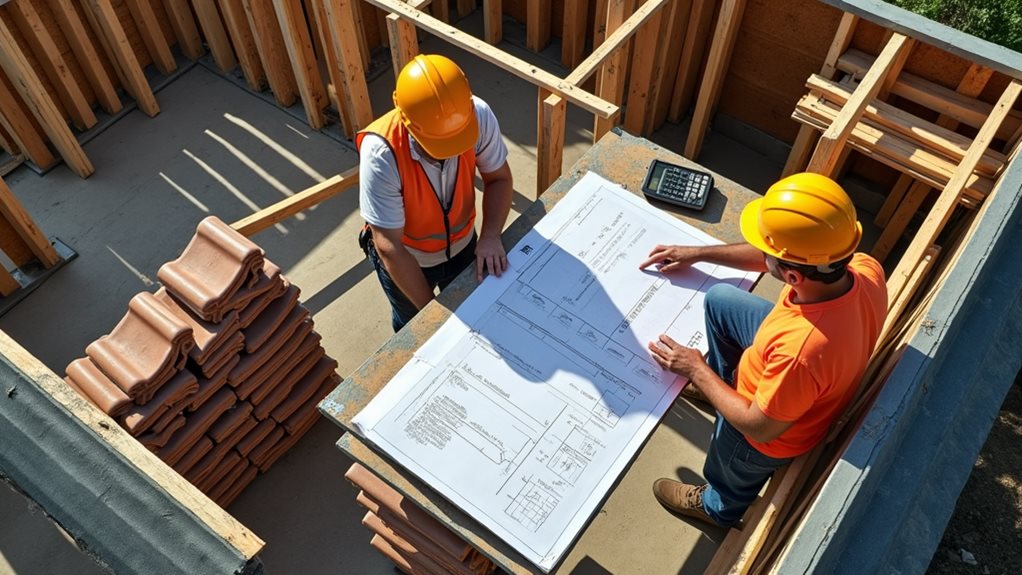
When you're budgeting for your roof extension, you'll need to account for often-overlooked costs like permits, structural engineering assessments, and potential repairs to existing framework.
You should also factor in a 15-20% contingency buffer for unexpected challenges that might surface during construction, including hidden damage or material price fluctuations.
While planning your timeline, it's essential to build in extra days for potential weather-related setbacks, especially during seasons prone to rain or extreme temperatures.
Although many homeowners focus on the obvious expenses of a roof extension, it's the hidden costs that often derail budgets and timelines. When you're planning your project, you'll need to account for unexpected repairs and hidden expenses that can greatly impact your final costs.
To help you prepare for these potential surprises, here are three critical areas to examine:
You'll want to establish a contingency fund of at least 15-20% of your total budget to cover these potential expenses and maintain your project's momentum.
Since weather plays a pivotal role in roofing projects, you'll need to factor potential delays into your timeline and budget from the start. Understanding weather impact on your roof extension will help you develop realistic expectations and reduce stress during the process.
You'll want to work closely with your contractor to create a flexible schedule that accounts for seasonal challenges. During summer and fall, you'll typically encounter fewer weather-related setbacks, but it's crucial to maintain open communication about delay management throughout your project.
When planning, consider that rain, snow, or high winds can temporarily halt work, affecting both material installation and worker safety. Your contractor should provide regular updates and help you adjust timelines when mother nature doesn't cooperate, ensuring your roof extension stays on track despite unexpected weather challenges.
When looking for the right contractor for your roof extension project, you'll want to start by verifying their licenses and insurance coverage to protect yourself from potential liability issues.
It's smart to gather written bids from at least three qualified contractors, making sure each proposal includes detailed cost breakdowns, material specifications, and project timelines.
You can then compare these bids side by side, considering not only the price but also the contractor's credentials, experience with similar projects, and their understanding of local building codes.
Three essential steps stand at the forefront of hiring a roofing contractor: verifying licenses, confirming insurance coverage, and checking certifications.
In California, you'll need to guarantee your contractor holds a valid C-39 Roofing Contractor License for projects over $500, along with proper insurance coverage to protect your investment.
When conducting your license verification and insurance assessment, follow these vital steps:
Successfully managing your roof extension project starts with gathering and comparing multiple written bids from qualified contractors.
When implementing your bid comparison strategies, make sure each proposal includes a detailed scope of work, specific materials, and a thorough cost breakdown. You'll want to see clear timelines, warranties, and guarantees outlined in writing.
Your contractor evaluation criteria should extend beyond just price considerations.
Look for contractors who provide evidence of their track record through past projects, professional affiliations, and verifiable client references.
You'll also want to assess their communication style, safety protocols, and after-sales support offerings.
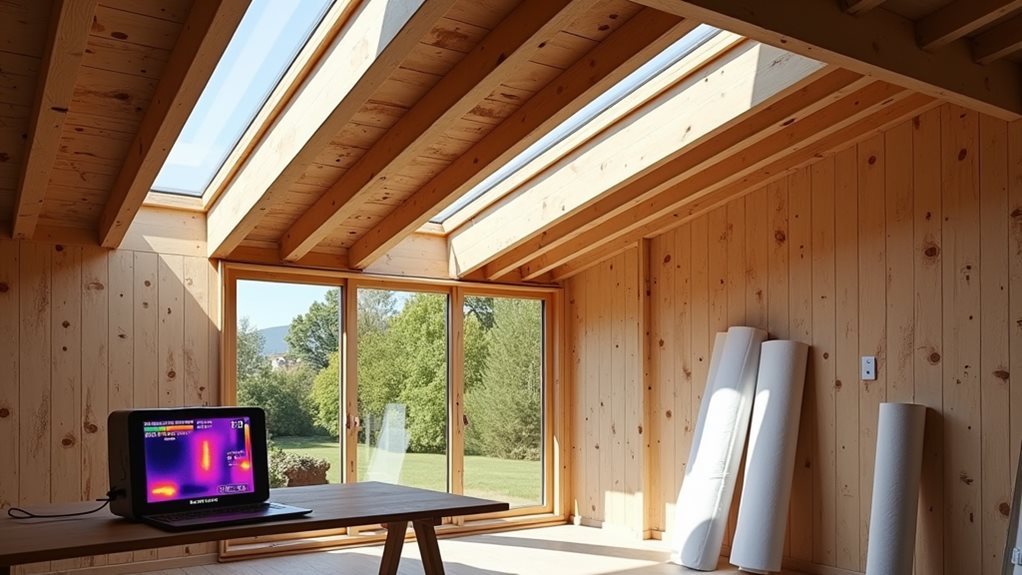
As homeowners increasingly prioritize sustainability, maximizing energy efficiency in your roof extension has become a crucial consideration that impacts both the environment and your wallet.
Today's energy efficient technologies and roofing design trends offer numerous ways to create a space that's both comfortable and cost-effective.
Here are three key strategies to enhance your extension's energy efficiency:
When you're extending your roof, you'll need an effective ventilation strategy that combines proper attic airflow, heat management, and moisture control to protect your investment.
Your ventilation system should include a balanced mix of intake and exhaust vents, maintaining at least 1 square foot of ventilation for every 150 square feet of attic space.
To maximize your roof's longevity and energy efficiency, you'll want to pair these ventilation measures with appropriate insulation levels, ensuring a 1-2 inch air gap between the insulation and roof sheathing for peak performance.
Proper attic ventilation stands as the cornerstone of a healthy, energy-efficient roof system. When you're planning your roof extension, you'll need to implement effective attic venting strategies that create a continuous flow of air.
Your ventilation system should maintain a careful balance between intake and exhaust vents, ensuring ideal airflow improvement techniques throughout your attic space.
To maximize your attic's ventilation effectiveness, focus on these key elements:
Successful heat control in your roof extension depends on a strategic combination of ventilation and insulation techniques working in harmony.
You'll want to start with reflective coatings that can lower your roof's temperature by up to 20°C and reduce your cooling costs by as much as 40%.
When it comes to insulation techniques, consider spray-on aerogel coatings or reflective roof membranes paired with insulation boards.
Don't forget about ventilation principles – you'll need at least 1-2 inches of airspace between insulation and roof sheathing for peak performance.
Your design considerations should include continuous ventilation from eave to ridge, especially if you're planning conditioned attic spaces.
Effective moisture prevention in your roof extension starts with a thorough understanding of how water vapor moves through building materials.
You'll need to implement robust ventilation systems that work alongside smart moisture monitoring devices to protect your investment.
When you're planning your extension, consider how moisture can accumulate from various sources and impact your roof's longevity.
Here are three essential steps to manage moisture effectively:
When planning a roof extension, seamless integration with your home's existing architecture stands as one of the most critical elements of the project.
You'll want to focus on achieving perfect roof aesthetics and architectural harmony by carefully evaluating your current structure and selecting compatible materials that complement your home's character.
Start by consulting a structural engineer to assess your roof's condition and load-bearing capacity. They'll help you determine the most suitable extension type, whether it's a traditional gable, sleek catslide, or practical monopitch design.
When selecting your tie-in method, consider how it'll affect both functionality and visual appeal. The butt-and-run approach often creates the most seamless look, while step-down methods can add architectural interest while maintaining structural integrity.
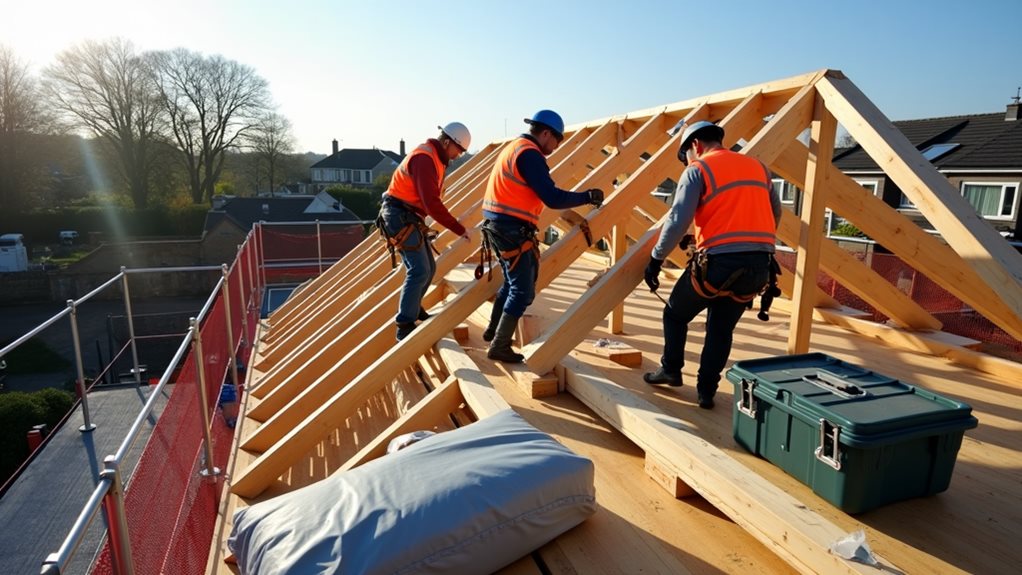
Safety measures form the backbone of any successful roof extension project, requiring careful attention to both equipment selection and proper implementation protocols.
When you're planning your roof extension, implementing thorough safety protocols and hazard identification processes isn't just about compliance – it's about protecting everyone involved in the project.
Here are three essential safety measures you'll need to implement:
When you've followed these essential tips, you'll be well-equipped to transform your humble abode into that enviable rooftop sanctuary you've been dreaming about. Whether you're creating a cozy reading nook or a spectacular entertainment space, don't forget that Rome wasn't built in a day – and neither will your perfect roof extension. Just remember, it's better to measure twice and build once than to explain to your spouse why the rain's dripping onto their favorite armchair.